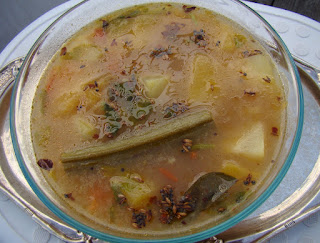


Virodhi Nama Samvatsara Subhakankshalu
March 27th 2009
The Telugu New Year festival or Ugadi is celebrated on - Chaitra Suddha Padyami
(1st day of Chaitra masam) in Vasantarutuvu. This is a festival to appreciate Nature.
Ugadi marks the beginning of a new Hindu calendar - Hindu almanac. It is a 60 year calendar with each year having a special name. Cycle repeats every 60 years.
Ugadi means the beginning of a New Age, the onset of spring symbolically marks a beginning of new life with plants which have been barren until now, acquiring new life- shoots and leaves. Fields and meadows that have been hidden under the mist of winter begin to shoot up giving hope and cheer. These symbolize Prosperity and Well-being.
Birds that have migrated to warmer places come back searching for “Home” and as a sign that they are back, fill the air with toots’ and tweets. Sweet song of Kokila resonates in the air.
The blooming of the neem flowers fills the air with a pungent aroma which is unique and healthy. The bloom itself is so short that immediately it will drop the flower and the tree will stand Majestic and Strong!
I cannot help but, mention the fun under the mango trees. Mango flower also blossoms during this time and it is budding season for the mango tree. Small mangoes start showing up, tempting us to reach out, but the promise of a bigger mango, sometimes may stop us from plucking it, but our little friends who have just got back on trees do not mind so much! So, they just bit, pluck and play with them. The result, lot of mangoes under the tree! The tender mangoes have a tart taste.
Fresh crop of Sugarcane is ready for harvest, sugar and jaggery with its fresh flavor, tender color and strong smell fills the market places.
Tamarind shells ripe and become tangy and new tamarind with its special taste – sweet & tangy and new softer look gives the dishes a new fresh look.
Ugadi Pachadii, a special, made on this day is served without fail. Ugadi Pachadi is a blend of the six tastes nature has to offers us, traditionally called as "shadruchulu". The six tastes are:
Teepi - Sweet
Pulupu - Sour
Chedu - Bitter
Vagaru - Tart
Karam - Hot
Uppu - Salt
It accentuates- highlights the idealistic representation of the right blend in one's life.
Ugadi Pachadi is made with new jaggery, raw mango pieces, neem flowers and new tamarind.
Jaggery is sweet signifies purity, joy and is an energy boost for the body.
Neem flowers are bitter and signify sorrow but, they have high medicinal value.
Tart of the mango and sour in the Tamarind are from the new crop. Karam and salt are necessities of any dish.
The significance of this combination is to indicate that life is a mixture of good and bad, joy and sorrow, success and disappointment, and all of the experiences have to be treated alike. Mankind should raise above all these and quest for making life better for one’s self and for the society around with selfless service. A combination of all experiences is Life!
People listen to Panchangam, a Sanskrit word, means "five limbs/parts," which refers to the fact that every panchangam includes the five basic elements.
Tithi - lunar day
Nakshatra - the constellation, the moon is aligned with (the heavenly bodies)
Karana - certain astrological divisions of the day
Yoga - a particular angle of the sun and moon (conjunctions) and
Vara or vasara - solar weekday (name of the day)
Panchangams furnish other astronomical information which is extensively used by astrologers, as well as the times of all forthcoming religious events. Yearly calendar of the forecast of the coming year, the amount of rain, crops and yield, storms and other natural calamities, prices and other relevant things. Prediction of the whole year and make people prepare to face any situation.The study of Panchangam involves understanding Rasi phala, the impact of the signs of the zodiac signs on the individual.
Special dishes are prepared for the occasion. Pulihara and Bobbatlu are Ugadi specials.
Virodhi means enemity. Let us win over Virodhi with Maytri- (Love and affection) and make this a wonderful year for all of us.





.JPG)
























